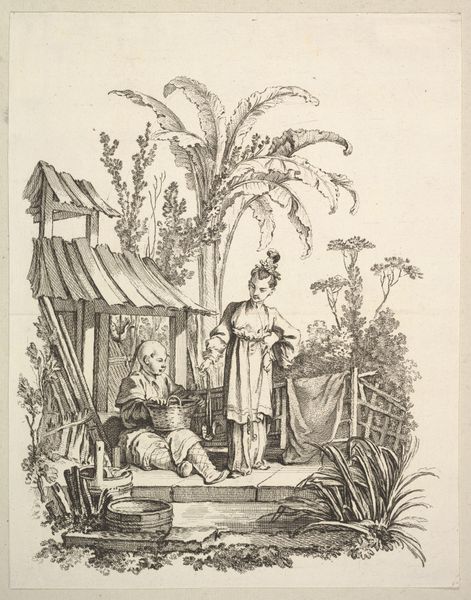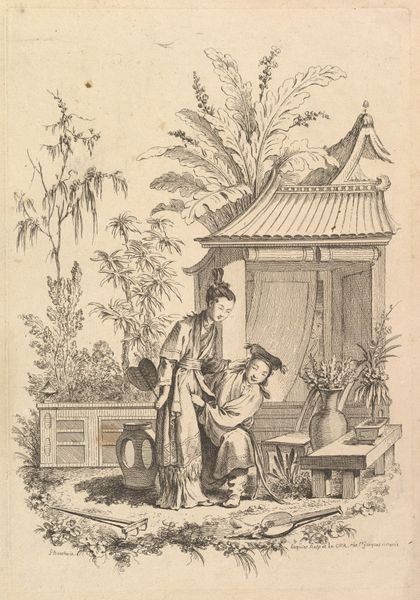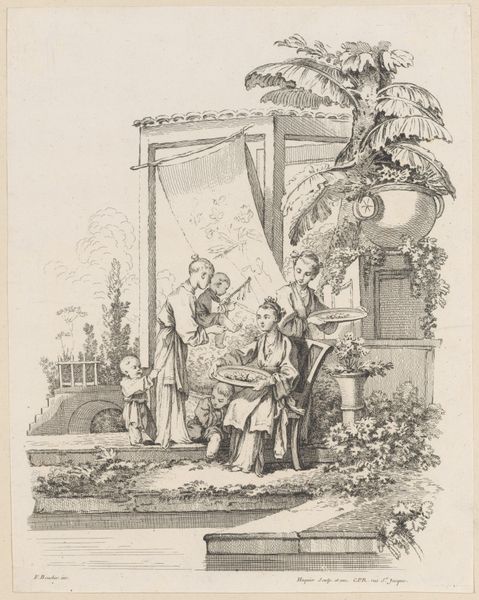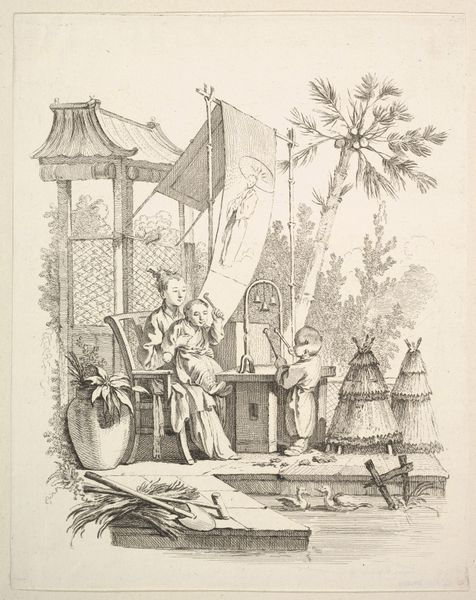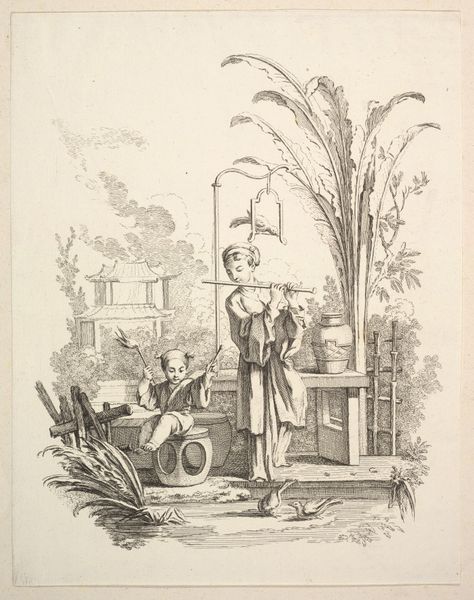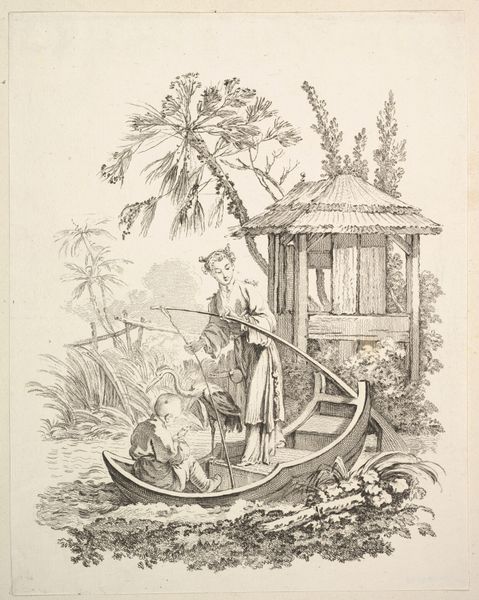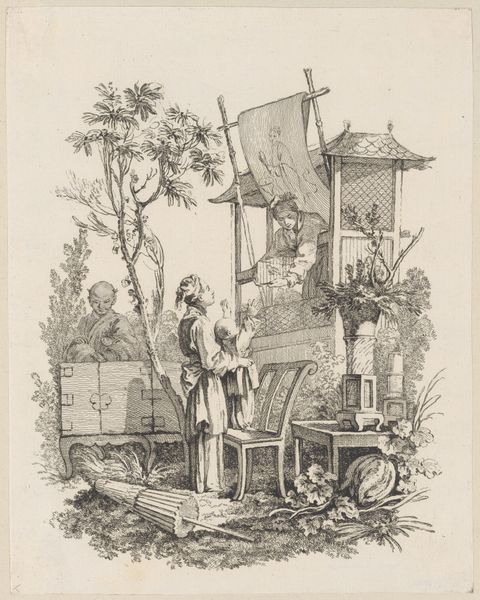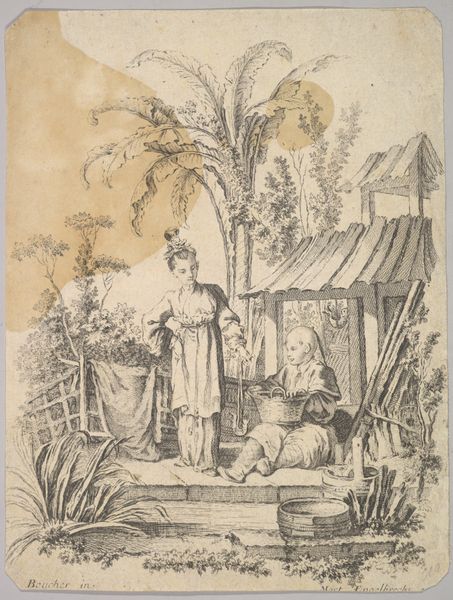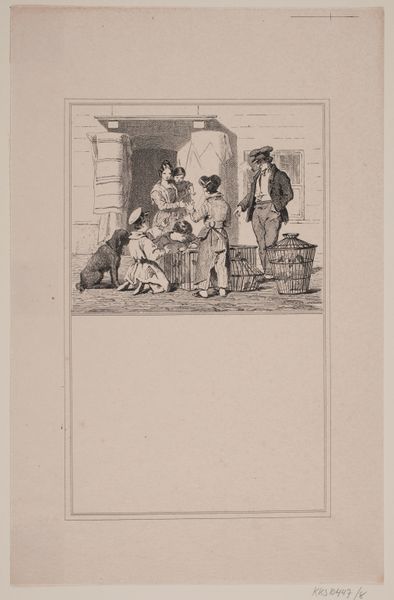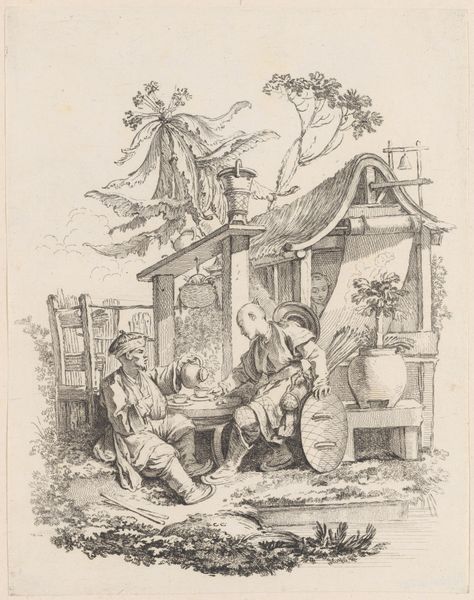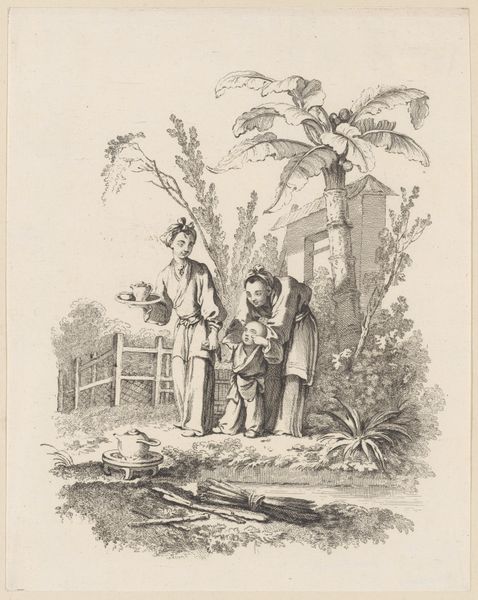
drawing, print, engraving
#
drawing
#
ink drawing
# print
#
pen sketch
#
asian-art
#
landscape
#
bird
#
figuration
#
line
#
genre-painting
#
engraving
Dimensions: Sheet (trimmed): 11 7/8 × 9 3/16 in. (30.1 × 23.3 cm)
Copyright: Public Domain
Editor: This is "The Toilet," an engraving by Gabriel Huquier made sometime between 1737 and 1747. It’s part of the collection here at the Met. What strikes me is the delicate line work; it almost looks like a dream. How do you interpret the symbolism at play in this print? Curator: Notice how the artist presents us with an imagined China, filtered through European eyes. What symbols feel immediately recognizable, and which ones might be inventions? Editor: Well, the figures’ robes, the garden architecture…it all seems intentionally “oriental," for lack of a better term. The birds in the circular frame feel significant, but I’m not sure why. Curator: Birds often represent freedom, or the soul, across cultures. But consider *where* the artist places them - within that symbolic portal, seemingly observed rather than wild. The circular frame recalls ancient Asian bronze mirrors or perhaps an otherworldly vision, something *othered*. How might the placement within this shape change your understanding? Editor: It suggests the exotic, observed and framed for the European gaze. It feels staged. Is this a common theme in art from this period? Curator: Precisely! "The Toilet" participates in a European fascination with Chinoiserie. Through decorative arts like these, Europeans built their own idea of an exoticized Orient, laden with symbolic meanings often disconnected from actual Asian culture. And how do you see that performing for us, today? Editor: So the artwork isn’t necessarily about China, but about Europe’s *idea* of China? That's interesting and maybe troubling, knowing what I now know about orientalism. Curator: Indeed. Understanding those constructed symbols reveals not just the artistic style of the period, but also its complex relationship with the rest of the world, and perhaps, how we continue to perpetuate ideas and imagery from one generation to the next.
Comments
No comments
Be the first to comment and join the conversation on the ultimate creative platform.
